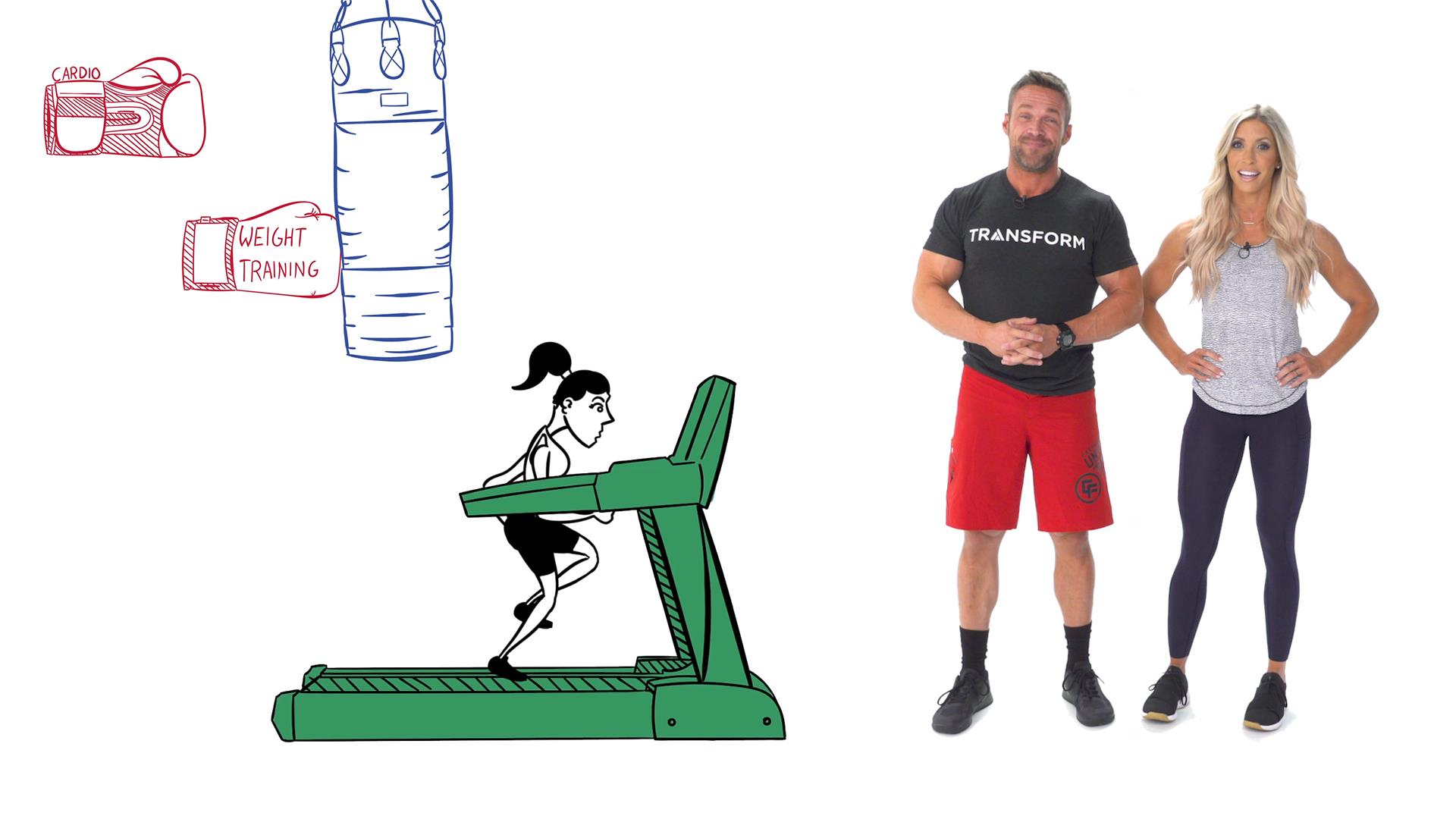
Diets like Paleo and Whole30 are restrictive in nature and can be hard to stick with long term.Joana Lopes / Shutterstock
At any given time one or more competing diets seize the attention of people across the country looking for the magic bullet, the exact combination of right and wrong foods to help them lose weight, get healthy and live better. And savvy marketers in food manufacturing will — as they have since time immemorial — respond to that quest with food products labeled with the trend du jour. But before you grab that paleo gluten free vegan brownie, take a step back from the snack aisle.
It’s easy to buy into the hype, but just because a food is sporting whatever Mad Libs label is hot now doesn’t mean it’s good for you. Not to say it’s the worst thing in the world — while some diets have no redeeming value whatsoever, many of the trends sweeping the internet have at least something we can take away.
But among the cacophony, how do you know what’s what?
Marisa Moore, RD, a registered dietitian and nutritionist, breaks it down with a look at the pros and cons of several of the most popular ways of eating today.
1. PALEO-ISH
Paleo “really started as a throwback to human roots where the diet requires you to focus primarily on foods from paleolithic times,” Moore says. “So you can have eggs, fish, seafood, meat, vegetables, fruit, nuts and seeds, but not things that came along later like refined foods, grains, legumes, dairy, and refined sugar.”
WHAT’S THE DOWNSIDE?
A big drawback with Paleo and friends (for our purposes we’ll lump keto and Whole 30 here even though yes, yes, they’re not the same thing) is their restrictive nature, Moore says. They can be hard to stick with long term. But “my biggest issue is [that it] excludes things like beans that have well-established health benefits like fiber.”
What’s more, “you have to really evaluate the whole label and see what’s in there,” she says. “For most paleo foods it will be a clean label but look at the sodium, is it incredibly high? [And] there are a lot of paleo desserts. I don’t think people in paleolithic times were making coconut sugar brownies. Just because it’s a paleo cupcake doesn’t mean it’s healthy.”
WHAT’S IT GOT GOING FOR IT?
“On the upside it does encourage you to eat fruits and vegetables, and fish, which is awesome,” says Moore.

2. JUICE CLEANSE
These liquid diets could range from freshly squeezed fruits and veggies to “lemon water with cayenne pepper and no nutrition at all,” Moore says.
WHAT’S THE DOWNSIDE?
“On a straight juice cleanse you’re probably missing out on fiber and definitely missing out on protein,” Moore says. “My concern is you stay on it too long and experience nutrient deficiencies. Even [if you’re on it] a few days … to me it’s more important what you’re doing those other 360 days.” Beyond that, “People get frustrated because of hunger,” she says. “It’s just not sustainable.”
WHAT’S IT GOT GOING FOR IT?
“The upside is you’re gonna get some vitamin C in there,” says Moore.
I can think of easier ways to get Vitamin C than a hangry-inducing liquid diet, how about you?
3. VEGETARIAN/VEGAN
Vegetarians eschew meat, while vegans avoid all animal products including dairy and eggs.
WHAT’S THE DOWNSIDE?
“The biggest thing if you choose to follow a vegan diet in particular is to know the nutrients of concern” says Moore. “It’s not that hard to get protein as long as you eat nuts, seeds, and beans in proper quantities, but you need to be mindful of B12, calcium, and zinc.” And for both vegans and vegetarians, she adds, you’ll want to look for an omega-3 fatty acid (generally found in marine life) supplement.
Also problematic, she says, especially among college age women who want to be vegan, is “because they may not know what to choose it’s easier to run to the frozen food department and grab whatever says vegan and not pay attention to what’s in it. Sometimes it’s very high in saturated fat and sodium. You absolutely have to look beyond the front of the package because [a vegan label] does not mean it’s healthy.” (It also doesn’t mean it’s even a natural plant based food.)
WHAT’S IT GOT GOING FOR IT?
“There’s lots of evidence to support plant-based diets,” Moore says, mostly in research on vegetarians. Benefits include lower body mass index and often lower blood pressure, she says. The biggest boon to veggie diets, she notes, is (no surprise!) eating more plant based foods. “I’m just a personal champion for that.” So before grabbing that packaged vegetarian product, “look at adding in a recipe for chickpeas one night, swap out some meat in a burger for beans, and try a lentil soup every now and then.” And look for ways to find variety, she adds, “because the best plant based diets can have variety.”
(Also, vegan can be incredibly delicious, albeit not nutritionally stellar. One of my favorite restaurant dishes is a vegan “Farby”— I know perfectly well it’s not healthy when I enjoy it, but let’s be honest, you don’t go for even a vegan version of Arby’s beef and cheddar for your health.)
4. GLUTEN FREE
“Some people cannot have gluten because they have celiac or an intolerance so it is essential they have a gluten free diet,” Moore says. “That does not mean they need to go to the snack aisle and pick up gluten free snacks. It means select whole foods that are naturally gluten free.”
WHAT’S THE DOWNSIDE?
“The main issue is there’s this health halo around a product if it says it’s gluten free,” says Moore, “[but] a lot of crackers and chips and highly processed foods are just trading one refined grain for another that just happens to be gluten free.”
Another issue, she says, is gluten free foods may not have a lot of fiber so “you might feel a little hungry after.”
True story. I’m a little addicted to Costco’s gluten free pizzas (which I get because they taste good not because I have to eat gluten free) and they aren’t as filling as a plain old flour-dough pizza.
WHAT’S IT GOT GOING FOR IT?
“The idea of looking at those typical sources of gluten in the diet might be good,” Moore says. “Because if you’re eating chips, pretzels, pizza, crackers, breads … evaluating those and getting rid of say half might help.”
(But it’s not because you’re getting rid of gluten, she points out, but excess carbs and calories.)

5. LOW FAT
The whole premise is “if you follow a lower fat diet you’re going to automatically lose weight,” Moore says. But “that’s not necessarily the reality.”
WHAT’S THE DOWNSIDE?
“Sometimes when you see the words ‘low fat’— especially when they’re plastered over a snack — they’re high sugar and even high in calories and unfortunately are not very satisfying,” Moore says. “This whole idea of ‘you have to stay away from fat’ is pretty outdated. There’s a lot of good evidence to show healthy fats like nuts and seeds and avocado help with heart health.” Fats also help us feel satisfied so we’re not hungry, she says.
Yogurt makers please take note: we don’t want your fat free sugar bombs for breakfast.
WHAT’S IT GOT GOING FOR IT?
If anything, if it makes you re-evaluate,” Moore says. “Eating a lot of high fat meats is probably not what you want to do on a regular basis.”
So where does this leave us? With advice that doesn’t sell well on a label. “Generally what works is making lifestyle change you can adjust to,” Moore says. “You don’t have to worry about cheat daysand ordering special ingredients.”
As long as I can have the occasional Farby I could live with that.
[“Source-nbcnews”]
